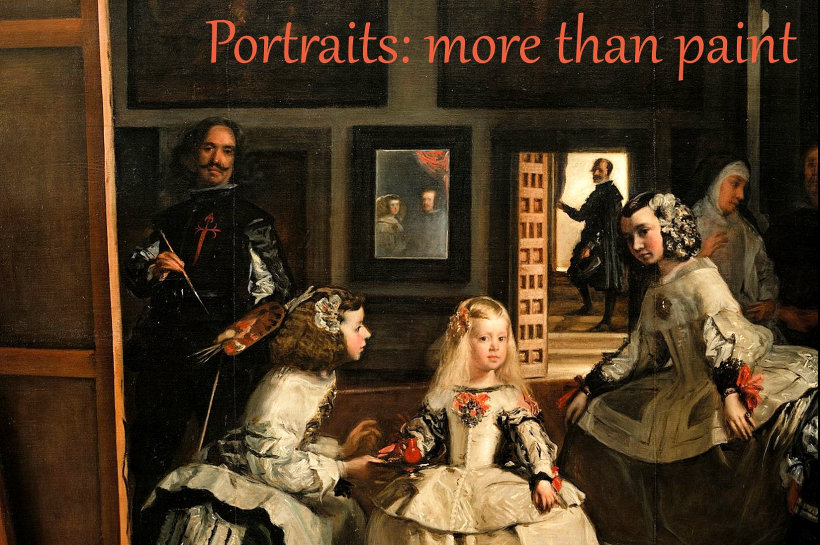Here are brief bios of the artists, composers, and writers considered in the class, listed in order of birth.
A not-necessarily-up-to-date alphabetical listing of artists for the whole course can be found at
BIOS.
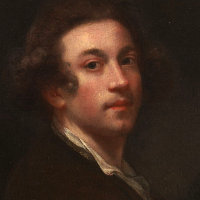 |
Sir Joshua Reynolds, 1723–92. English painter.
Reynolds was the leading portraitist of his day, the first president of the Royal Academy, and an important theorist of art.
|
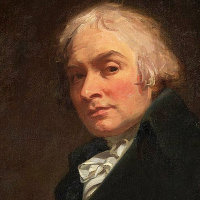 |
George Romney, 1734–1802. English painter.
Born in the Northwest of England, Romney struggled when he came to London in 1762, as he seemed to have earned the enmity of Benjamin West, and was never invited to join the Royal Academy. All the same, he became one of the most successful portraitists of his time, somewhat Romantic in nature, and especially inspired by the actress Emma Hamilton (who was, however, the mistress of Admiral Nelson).
|
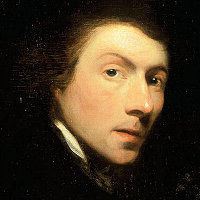 |
Gilbert Stuart, 1755–1828. American painter.
Although a patriot, Stuart, who was born in Rhode Island, went to Britain in 1775 and studied with Benjamin West, making his name with his 1782 full-length portrait of Sir William Grant (The Skater). He returned to the US in 1793 (leaving many commissions unfinished) and there became the de facto presidential portraitist, painting all six of the first Presidents.
|
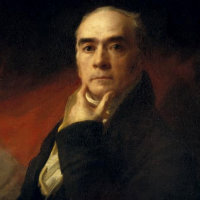 |
Sir Henry Raeburn, 1756–1823. Scottish painter.
The leading Scottish portrait painter of his time, noted for the forthright quality of his technique, giving his figures an outstanding presence.
|
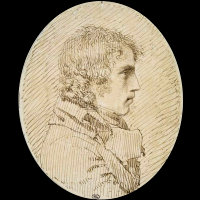 |
Pierre-Paul Prud’hon, 1758–1823. French painter.
Prud'hon spanned the transition in French art between Classicism and early Romanticism, and the drama of his allegorical paintings was much admired. But his greatest legacy is probably as a portraitist, including a lovely informal portrait of the Empress Josephine and some strikingly lively sketches of other female sitters.
|
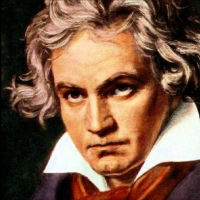 |
Ludwig van Beethoven, 1770–1827. German composer, working primarily in Vienna.
The dominant composer of his time, Beethoven wrote 9 symphonies, 16 string quartets, 32 piano sonatas, and one opera, Fidelio, which he labored on in several versions between 1805 and 1814. From about 1800 onwards, increasing deafness gradually put an end to his performing career, although he wrote some of his finest works when totally deaf. He is one of the first composers to exhibit a distinct late style.
|
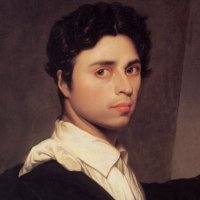 |
Jean-Dominique Ingres, 1780–1867. French painter.
Ingres was trained in the academic tradition, and indeed spent 7 years as Director of the French Academy in Rome. Although one of the great masters of French Romantic era, his style was always marked by a cool classicism and precision of line, in contrast to the freer handling of paint by his contemporary Delacroix.
|
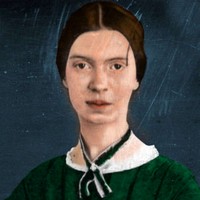 |
Emily Dickinson, 1830–86. American poet.
As she lived in Amherst for her entire life, latterly refusing to leave her family home, Dickinson's prolific output was virtually unpublished in her lifetime, and was subject to editing after her death to bring it more in tune with contemporary aesthetics. But it is precisely the unconventional nature of her verse, with its short lines and slant rhymes, that has led to her recognition as one of the leading American poets of her time.
|
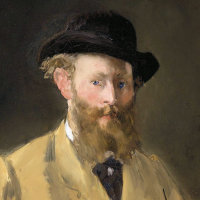 |
Édouard Manet, 1832–83. French painter.
Manet is arguably the greatest French painter in the third quarter of the 19th century. Though primarily a realist, he was influenced by older artists such as Titian and Velasquez. He was admired by the young Impressionists, became friends with Monet, and produced a number of works in their style, but he never exhibited with them, preferring to retain his own status in the official Salons.
|
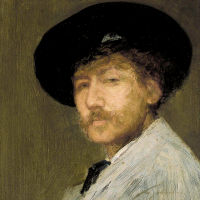 |
James Abbott McNeill Whistler, 1834–1903. American painter, working in London.
Whistler's American father was a railroad engineer who took work in Russia when the future artist was still a child, so his training and career took place almost entirely in Europe. He was famous for giving his near-abstract paintings titles such as Arrangement in Grey and Black (the portrait of his mother), thus emphasizing the connection between painting and music.
|
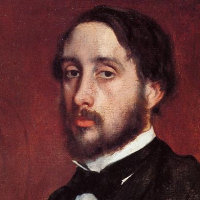 |
Edgar Degas, 1834–1917. French painter and sculptor.
The son of a wealthy banker, he originally trained for the law. When he did go into art, he painted mostly traditional subjects until Manet introduced him to the Impressionists, at which point he turned entirely to scenes from everyday life—including a good number of portraits, mostly in informal settings. Although he was the only artist to participate in all eight Impressionist shows, he strongly resisted the term, and pursued his own quite original course.
|
 |
Paul Cézanne, 1839–1906. French painter.
With Gauguin and Van Gogh, though painting in a very different style from either, Cézanne is considered one of the leading artists of the Post-Impressionist period. Working first in an academic style, he was converted to Impressionism by his friend Camille Pissarro. After exhibiting in the first two group shows, however, he returned to his native Aix-en-Provence, living like a recluse and painting pictures whose play with space and surface would revolutionize 20th-century art.
|
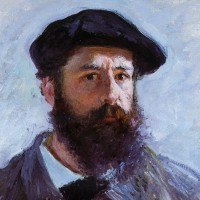 |
Claude Monet, 1840–1926. French painter.
The central figure in Impressionism (it was his Impression: Sunrise of 1872 that gave the movement its name), he intensified its focus more than any other artist, continuing well into the next century to produce series of paintings showing minute variations in the light and color in basically the same scene. Cézanne famously said of him, "Monet is nothing but an eye—but my God, what an eye!"
|
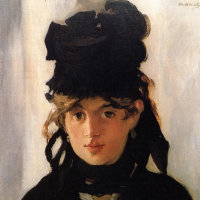 |
Berthe Morisot, 1841–95. French painter.
A descendant of Fragonard, pupil of Corot, sister-in-law of Manet, and later member of the Impressionist group, she brought a fine sensibility to her mainly domestic subjects painted in her characteristic limpid style. Some of her landscapes, however, could be as strong as any of her male colleagues. The portrait is by Manet.
|
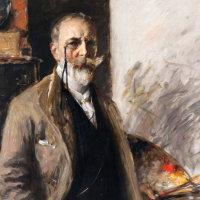 |
William Merritt Chase, 1849–1916. American painter.
When working in Saint Louis, Chase caught the attention of some wealthy collectors, who funded a two-year study tour in Europe (mainly in Munich). He returned to America in 1878 as an artist versed in the heightened color and free brushwork of Impressionism, and prospered in that context both as a painter of society subjects and as a teacher.
|
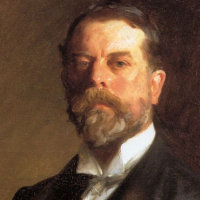 |
John Singer Sargent, 1856–1925. American painter.
Sargent was born in Florence, the son of wealthy cultured parents, and much of his career was spent in Europe, although his rising fame as the preeminent society portraitist of his day also took him back to America. He is said to have hated portraiture, though, and diversified into landscapes and watercolors for his own satisfaction.
|





















